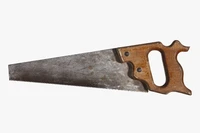
English vocabulary and phrases on Mid-Autumn Festival
saw means . Learn how to pronounce and use saw through vivid examples and easy-to-understand exercises.

The word "saw" in English has a tricky pronunciation! Here's a breakdown:
The most common pronunciation (and what you'll hear most of the time) is: /sɔː/ (rhymes with "law" or "go")
Let's break that down:
Think of it like this: You're saying "saw" as if you're sawing wood.
Regional Variations:
Resources to help you:
To help me give you even more specific advice, could you tell me:
Let's break down how to use the word "saw" in English. It's a surprisingly versatile word with several different meanings and uses! Here's a breakdown categorized for clarity:
Here’s a table summarizing the different uses:
| Part of Speech | Meaning | Example |
|---|---|---|
| Verb (Action) | To cut with a saw | "I saw the wood." |
| Noun | The cutting tool | “He bought a new saw.” |
| Verb (Experience) | To suddenly realize something | “I saw him lying!” |
| Verb (Permitted) | To be allowed/permitted (British) | “She saw me into the house.” (British) |
Tips for Using “Saw” Correctly:
To help me give you even more targeted advice, could you tell me:
Despite the inclement weather, we ______ the rare astronomical phenomenon clearly through the observatory's telescope. (A) perceived (B) witnessed (C) saw (D) observed
The project manager ______ a few discrepancies in the budget report during the initial review. (A) identified (B) saw (C) noticed (D) examined
He accidentally cut himself while using an electric ______ to trim the thick branches. (A) axe (B) blade (C) saw (D) cutter
To gain a competitive edge, the company must ______ market trends and consumer behavior closely. (A) analyze (B) overlook (C) disregard (D) perceive
The auditor decided to ______ the financial records for any inconsistencies before finalizing the report. (A) ignore (B) peruse (C) glance (D) omit
Exercise 1: Fill in the blanks
Exercise 2: Choose the correct answer
Exercise 3: Rewrite the sentences

English vocabulary and phrases on Mid-Autumn Festival

Tips to improve vocabulary in communication

English vocabulary by topic: Clothes

The secret to remembering all 50 English vocabulary words every day easily

English vocabulary by topic: Human body

Vocabulary of the most popular subjects in English

Learn English about Covid: All about vocabulary and disease prevention

Vocabulary of Subjects in English

Set of 60 English vocabulary on educational topics

Vocabulary - just a small thing!
Comment ()